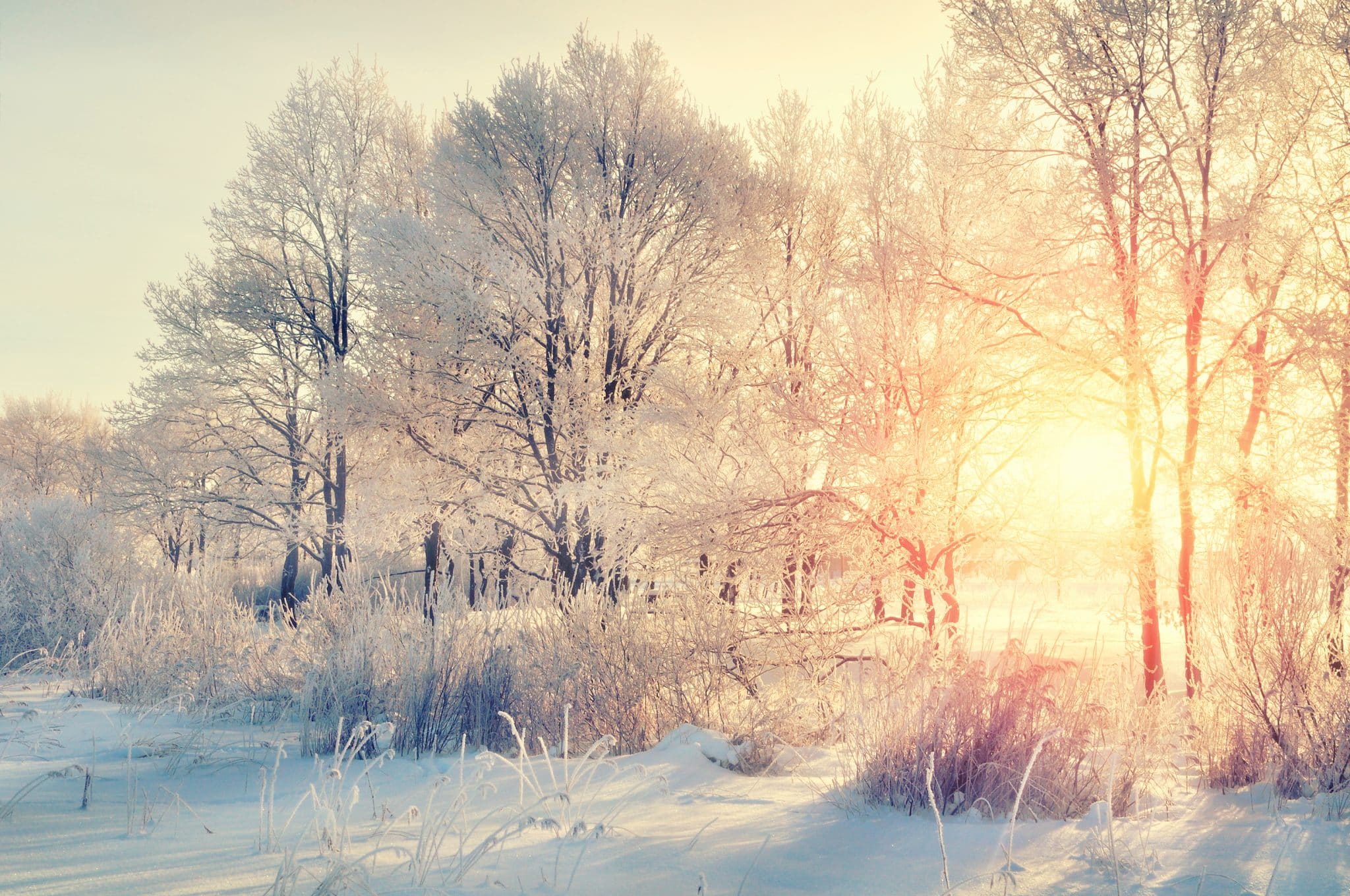Manitoba sees some of the harshest winters in Canada, with cold temperatures dropping well below freezing for months on end. The snow, wind, and extreme cold can be quite damaging to your trees and shrubs, especially if the proper precautions aren’t taken. But what exactly causes the damage?
Here’s what you need to know about winter’s effect on your trees.
Frost cracks
One of the most common signs of winter damage is a frost crack. Manitoba trees and shrubs are especially susceptible to this as our winter temperatures become increasingly variable. On sunny days, the cells in the bark warm up and expand with the heat, but as the sun sets or becomes suddenly covered by cloud, the bark begins to rapidly cool, which causes large, vertical cracks in the bark.
While these cracks may heal once the weather warms up, they don’t completely close up, which then leaves the tree or shrub open to various animals, microorganisms, and decay. While you can wrap younger trees to protect them from frost cracking, it’s difficult to prevent in older trees.
Sunscalding
Sunscalding is also caused by heating and rapid cooling. The sun warms up the tree’s bark, which causes parts of it to “wake up”, breaking out of dormancy and restarting growth activity. Once the sun goes down or is blocked, the tree cools quickly, which kills the growing cells.
This causes a kind of “callus” to form on the surface of the bark, which eventually cracks and falls off, potentially resulting in stunted growth and fewer leaves overall.
Moisture loss
Improperly insulated trees and those left open to the sun and wind can lose moisture too quickly through their foliage in the winter, which ends up making them drier and more brittle.
Moisture loss from the soil surrounding your plants can also damage them in the winter. It can dry out the soil and in turn dry out your trees. If not properly insulated with mulch, the soil may also expand and contract with changing temperatures, causing heaving, which may uproot your smaller trees.
Heavy snow and ice build-up
Especially in areas like Winnipeg that see a lot of snow, the build-up can weigh down the branches of your trees and shrubs, which can cause breakage throughout the winter, particularly in trees that are already damaged.
Sometimes, ice can build up on limbs, which makes them too heavy for the tree to supports, and they break off. This isn’t seen very often in Manitoba, since our extremely cold winters keep the air quite dry.
Salt damage
The salt we use to melt and prevent ice build-up on our roads and sidewalks can be quite damaging to trees and shrubs. You’ll usually see the effects of salt damage in the spring and early summer, where evergreens will turn brown, leaves will become “scorched” (turn brown), and branches will progressively wither and die.
Salt can be splashed onto trees by cars or carried toward trees as ice and snow melt. It can also cause damage in air deposits — snow and water will sublimate or evaporate, and the salt will cling to the water particles in the air and transfer to your trees. Salty water vapour and runoff will also find its way into soil, which can kill roots if drainage is poor.
Tree “girdling”
During periods of heavy snowfall, when getting to grass and other foliage is difficult, small animals like rabbits and mice will eat tree bark to survive. This causes a sort of “girdle” around the bottom of a tree, which can stunt growth and leave the plant open to decay.
Critter destruction
Speaking of small animals: mice, rabbits, and even deer can be the culprit of damaged trees by the time spring melts away the snow. They may gnaw on twigs, bark, leaves, and stems of smaller or newly-planted shrubs.
An effective preventative measure is to spray animal-specific repellant that is both tree-safe and non-toxic, simply leaving the creature with a bitter taste in its mouth and discouraging further bites. For best results, this should be applied on a dry, fall day prior to a snowfall, however it’s still feasible in the winter. Physical barriers like fences or tree guards are also an effective way to reduce unwanted visitors.
Seek preventative measures
Unsure of how to protect your trees and shrubs from the harsh Manitoba winters? You can read our blog post about what you can do to prevent damage, and call Kildonan Tree Service for any service you need to help keep your trees healthy all year long.
Whether it’s pruning, treatment, fertilizing, or removal, Kildonan Tree Service has the decades of experience you can trust and expert service you can depend on. Call 204-233-9337 or request a quote online.

